By Lance Peeples
Recently, while conducting prefire planning in my first-due area, I came across a restaurant with a large Dewar of carbon dioxide (CO2) located just outside the rear door. This flask was used to supply the soda fountain machines. In the past, restaurants used small volume pressurized tanks to carbonate their fountain drinks. These small pressurized tanks held little potential to inert the atmosphere in the large areas typically found in a restaurant, but this is not the case with large cryogenic containers such as Dewars. Several recent examples illustrate the danger:
In June 2011, a McDonald’s restaurant in Phoenix, Arizona, was evacuated because of a leaking soda machine in the basement. A pregnant employee reportedly collapsed while exiting the basement and two firefighters were injured during the incident. The building was equipped with on-site CO2 monitors, but apparently they failed to alarm.
Also in June 2011, a fast-food restaurant in Yorkshire, England, developed a CO2 leak that necessitated the evacuation of the building. Firefighters wearing SCBA disconnected the cylinder and ventilated the occupancy. No injuries were reported.
In September 2010, a CO2 leak in a McDonald’s restaurant reportedly resulted in the death of a woman in a restroom. 10 additional victims were injured, including three firefighters.
At a McDonald’s restaurant in Sanford, Florida, an 18-year-old employee reportedly died of asphyxiation while refilling CO2 tanks. The delivery driver also died trying to rescue the first victims. [i]
Although such incidents are thankfully rare, they serve to illustrate the hidden danger of carbon dioxide storage and delivery systems in such occupancies as fast-food restaurants, convenience stores, movies theaters, bars, nightclubs, cafeterias and similar businesses.
Properties of CO2
CO2 is a colorless, odorless non-flammable gas with a vapor density 1.5 times that of room air. It is non-toxic, but by displacing oxygen in confined spaces, the gas can cause asphyxiation. Symptoms of exposure include headache, nausea, dizziness, restlessness, difficulty breathing, sweating, malaise, rapid heart rate, coma, seizures and ultimately death.[ii] In the past, CO2 was typically delivered to businesses in pressurized cylinders however, recent practice increasingly involves using CO2 Dewars to deliver large volumes of cryogenic liquefied gas. These Dewars–referred to as DOT 4L292 or more simply “292s” in the gas industry–contain 160 liters of liquid CO2. Liquefied carbon dioxide has an expansion ratio of 553:1. This means a full “292” Dewar could totally inert 88,480 liters of volume (3124.6 cubic feet).
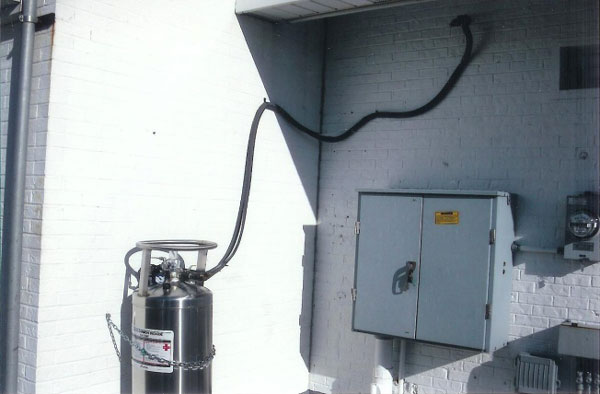
(1) DOT 4L292 cryogenic vessels contain enough CO2 to inert the atmosphere in a fairly large area. They can be located either inside or outside the building. When operating at suspected CO2 leaks, firefighters should exercise extreme caution and use self-contained breathing apparatus (SCBA).
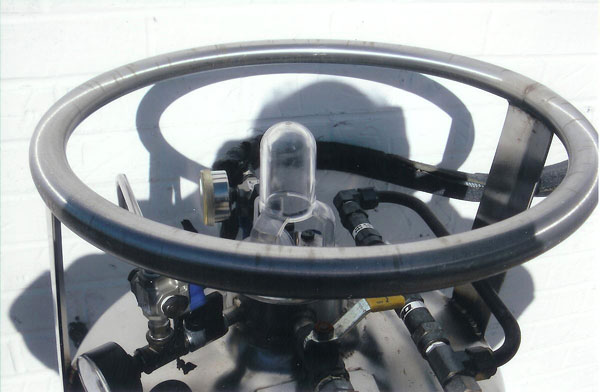
(2) Firefighters should wear complete personal protective equipment including SCBA, eye protection, gloves, and turnout gear when manipulating controls on a cryogenic vessel because of the possibility of burn injuries. Preplanning offers the opportunity to become familiar with the operation of these valves.
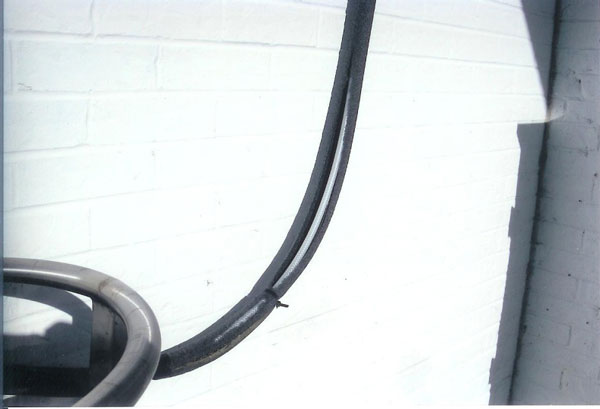
(3) Plastic tubing connects the Dewar to the fountain drink dispenser. This piping could easily be punctured, leading to an insidious leak inside the structure. Firefighters should be alert to this possibility when operating at convenience stores, fast-food establishments, restaurants, bars, and other business where CO2 may be used.
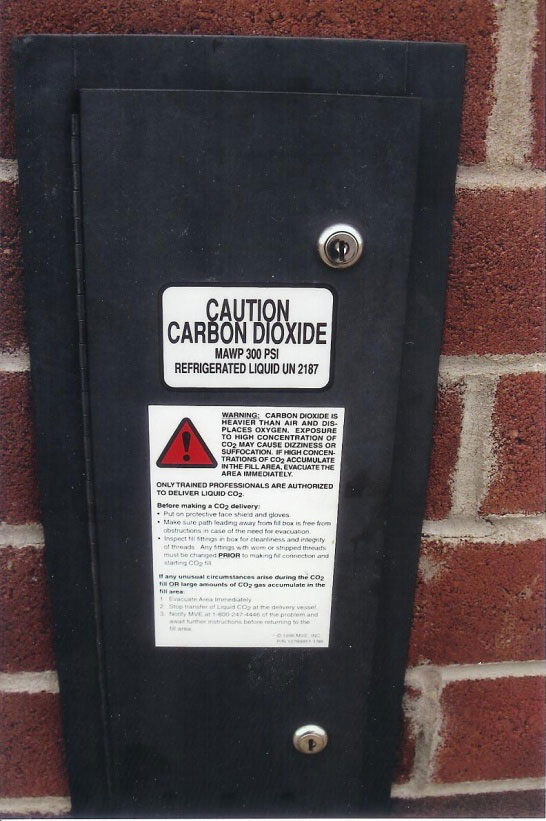
(4) In new fast-food restaurants, an exterior fill station is often provided. The gas-delivery driver simply drives up, unlocks the cabinet, and fills the Dewar, which is located inside the building.
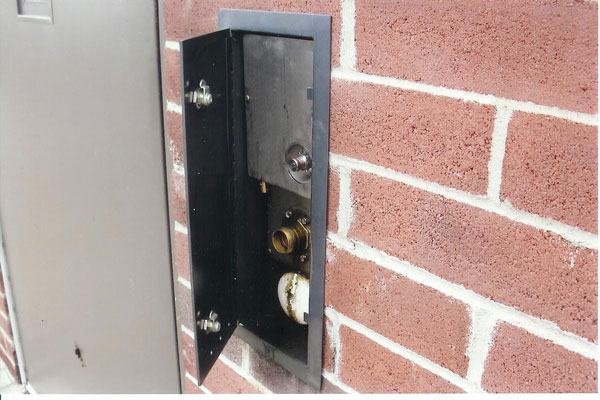
(5) A view inside the unlocked cabinet of an exterior CO2 filling station located on the outside of a fast-food restaurant.
Response Considerations
When responding to occupancies where CO2 is stored, firefighters must be alert to the possibility that it may may be leaking from the delivery systems. Signs to be alert for include:
1. More than one victim with the symptoms listed above.
2. Unconscious victims located in small confined spaces, particularly basements or cellars.
3. Escaping CO2 from a cryogenic vessel (Dewar). This may result in a visible cloud caused by condensing water vapor in the air (on account of the rapid cooling of the rapidly expanding CO2). The absence of such a cloud is NOT proof that CO2 is not escaping.
4. CO2 alarms sounding.
5. Reports of leaking CO2 from occupants.
6. Preplans of CO2 storage should result in a danger prompt from dispatch.
If a carbon dioxide leak is suspected, it is important that firefighters immediately don SCBA and begin ventilating the building. Positive-pressure ventilation with electric blowers may be required to remove CO2 (especially from below-ground areas) because of CO2’s high vapor density. Victims should be removed from the hazard area immediately and provided with supplemental oxygen. The leaking cylinder or Dewar should be shut off and isolated from the building. Because of the possibility of burns from cryogenic liquids, firefighters assigned to shut off the flow from a Dewar should wear full PPE, including gloves and eye protection. A low-oxygen meter should be used to determine if the area has been rendered safe for occupancy.
REFERENCES
[i] Leeb, F. “The Dangers of Carbon Dioxide in Fast Food-Type Occupancies.” WNYF-With New York Firefighters. 1st/2012. pp. 26-28
[ii] Ibid. p. 27.
Lance C. Peeples is a veteran firefighter in St. Louis County, Missouri. He has A.A.S .degrees in fire and paramedic technology, a B.S. in public administration, and an M.S. degree in fire and emergency management from Oklahoma State University. He is a Fire Officer II and a Fire Service Instructor II.
MORE LANCE PEEPLES

